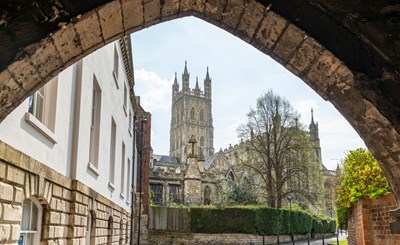City Centre Conservation Area set to be extended to protect city’s unique character

A new Conservation Area boundary, plus a Conservation Area Appraisal and Management Plan will be considered at this week’s cabinet meeting.
The City Centre Conservation Area currently includes the Gate Streets, the Greyfriars area, and Kings Square, as well as many of Gloucester’s most important listed buildings, such as the New Inn, St Mary de Crypt and the former Fleece hotel.
It also includes extensive archaeological remains including parts of Gloucester City’s Roman wall, some of which was demolished in the Civil War.
If given the go-ahead at Wednesday’s cabinet meeting, the conservation area boundary will be extended to St Nicholas Square and the space to the front of the Dukeries on Westgate Street, near to the grade I listed St Nicholas’s Church and opposite the grade II* ‘Folk of Gloucester’.
This area, which is part of the historic medieval street plan, is also the site of below ground remains related to Gloucester’s historic ‘Foreign Bridge’, as well as being a green area in the heart of the city.
Bearland House and Bearland Lodge, two impressive 18th century houses, will also be brought into the City Centre Conservation Area along with 41-49 Longsmith Street.
Local authorities manage conservation areas to protect the special architectural and historic interest of a place - in other words, the features that make it unique. Looking after historic places has a range of benefits, from supporting economic growth to creating a shared sense of community.
The review was carried out with the support of the Cathedral Quarter High Street Heritage Action Zone (HSHAZ) and saw a full public consultation take place.
HSHAZ is a £1.9million heritage-led regeneration scheme to preserve and repair Westgate street’s historic buildings and celebrate its heritage with cultural events and activities funded by Historic England and Gloucester City Council.
Councillor Stephanie Chambers, Cabinet Member for Planning and Housing, said: “Gloucester is a city that is looking to the future and undergoing a huge transformation but we’re also aware that we must conserve its heritage as well. We’re lucky to live in such a beautiful and historic city and it’s our job to protect that for future generations.”
